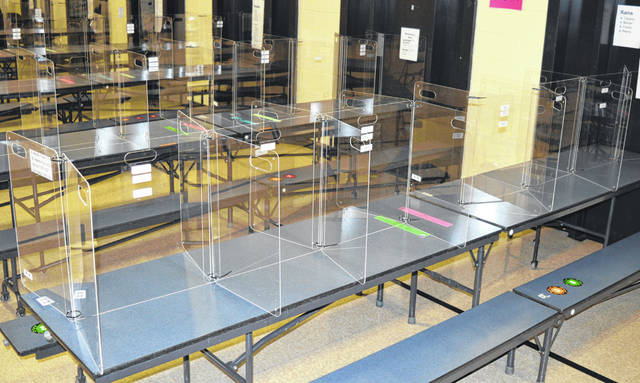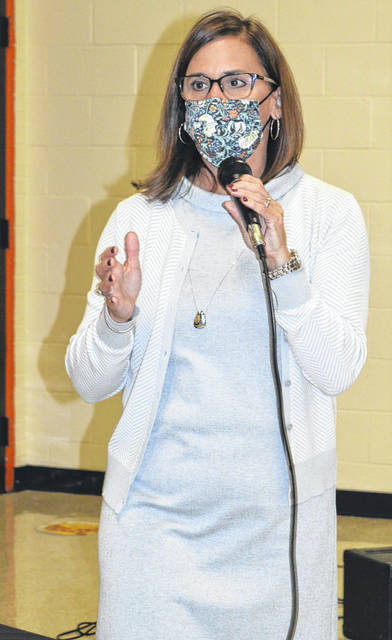

WILMINGTON — Even though Wilmington City Schools (WCS) has had seven COVID-19 cases, none of its 66 students and staff quarantined since the start of school has so far tested positive or become symptomatic.
WCS Superintendent Mindy McCarty-Stewart gave a COVID-19 presentation at Monday’s school board meeting, providing an update three school days since WCS transitioned from a hybrid, split schedule to a “Green Zone” schedule.
In Green Zone operations, all WCS grades K-through-12 students who are not doing the full-time Virtual Education option are back to in-person instruction Mondays through Fridays.
McCarty-Stewart also took the opportunity Monday to clear up any confusion district residents may have when it comes to how key pandemic-related terms are being used by WCS.
For the official WCS data regarding its coronavirus situation, the word “quarantine” applies to a student or staffer who separates from others because he or she has had close contact with someone who’s actually infected. Quarantine is a measure meant to help prevent the spread of COVID-19.
Of the total of seven actual COVID-19 cases at WCS placed in isolation, three have been students and four staff. Both represent less than 1 percent of WCS student and staff population, according to a presentation handout.
Of the total 66 WCS students and staff placed in quarantine, 56 have been students and 10 staff.
The number of students currently in quarantine represents 0.9 percent of the student population; and the number of staffers currently in quarantine represents 1 percent of the staff roster.
The superintendent also gave an overview of prevention strategies. For instance, temperature checks are held twice daily for every student in PreK through 12.
That’s a way to know immediately whether somebody entering a school building has a fever, said McCarty-Stewart. If they do have a fever, they go to the quarantine room and later go home.
There are see-through Plexiglas barriers in place on the tables in all lunchrooms, she said. These are an added protection for students while they eat lunch.
Though the barriers are placed there as a preventive measure, that doesn’t mean a student can’t be quarantined when an adjacent student is identified as a positive or probable COVID-19 case, the superintendent said.
In general, the coronavirus so far does not seem to get transmitted at school very much, and observers are finding out, said McCarty-Stewart, “that all the [preventive] measures, specifically the masks, are so important.”
Pictures ofa cheeseburger and watermelon, as two examples, are on the Holmes Elementary School cafeteria floor to identify spots where students can stand while in line and still be separated. Between the cheeseburger and the watermelon is where you have to hand-sanitize. Holmes Elementary is a K-through-2 school building.
Other health measures are in effect, such as hand washing and sanitizer stations for every classroom and the common areas. Cohort groupings and assigned seating have also been implemented.
With all the measures WCS is taking, said McCarty-Stewart, “We should hope to never see a long-term shutdown as we had to [do] in the spring.”
If the school district does have to have some kind of closure, then the goal is that it be short and quick, she said.
With the doubling in attendance that comes with the transition to the Green Zone, the recommended six-feet physical distancing cannot be maintained in common areas and many classrooms, noted McCarty-Stewart. So the focus is on three-feet physical distancing.
She also stressed that what happens outside the school setting and in the greater community is “so important” for checking COVID.
Reach Gary Huffenberger at 937-556-5768.



